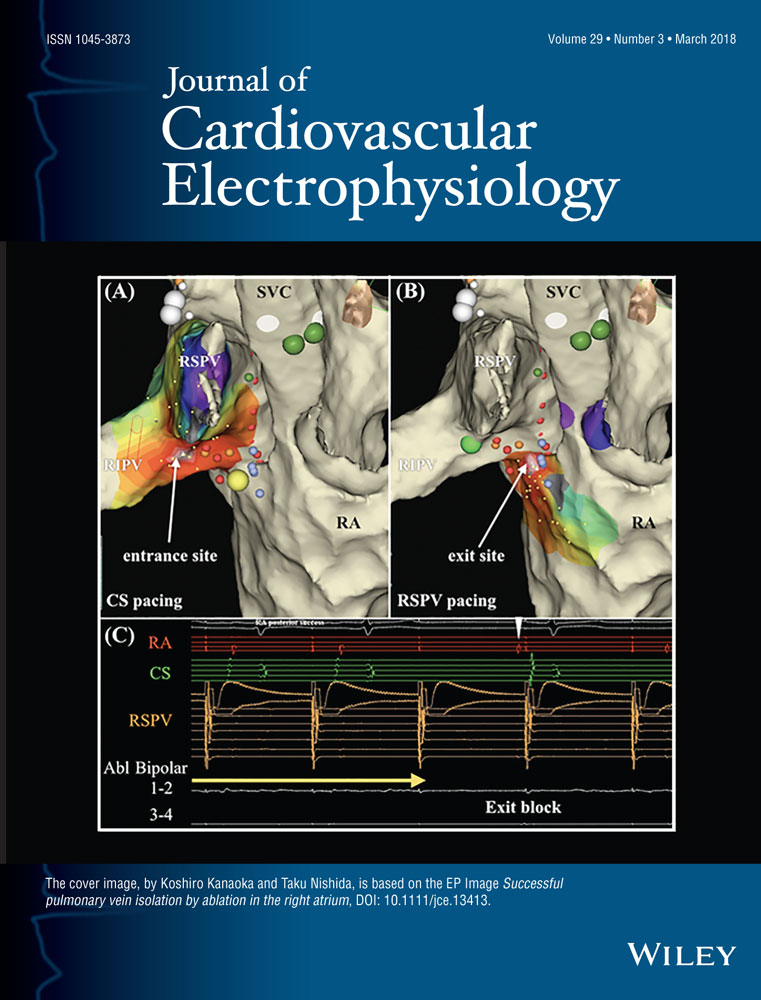Quality of life with ablation or medical therapy for ventricular arrhythmias: A substudy of VANISH
Funding Information:
This substudy did not receive any specific grant from funding agencies in the public, commercial, or not-for-profit sectors. The parent VANISH trial was supported by research grants from the Canadian Institutes of Health Research, Biosense Webster, and St. Jude Medical.
Disclosure: Peter Leong-Sit reports Biosense Webster honoraria (modest), Boston Scientific honoraria (modest), Medtronic honoraria (modest), St. Jude honoraria (modest); Bernard Thibault reports Medtronic research funding (modest), Medtronic honoraria (modest), St. Jude research funding (modest), St. Jude honoraria (modest); Vidal Essebag reports Biosense Webster honoraria (modest), Boston Scientific
honoraria (modest), St. Jude Medical honoraria (modest), Medtronic honoraria (modest); Marc W Deyell reports Biosense Webster research support (modest), Biosense Webster honoraria (modest); John L Sapp reports Biosense Webster research funding (modest), Biosense Webster consulting (modest), St. Jude research funding (modest), Medtronic honoraria (modest), St. Jude honoraria (modest). Other authors: no disclosures.
Abstract
Background/objective
We compared health-related quality of life (HRQoL) in patients randomized to escalated therapy and those randomized to ablation for ventricular tachycardia in the VANISH trial.
Methods
HRQoL was assessed among VANISH patients at baseline and 3-, 6-, and 12-month follow-up visits. Four validated instruments were used: the SF-36, the implanted cardioverter defibrillator (ICD) Concerns questionnaire (ICDC), the Hospital Anxiety and Depression Scale (HADS), and the EuroQol five dimensions questionnaire (EQ-5D). Linear mixed-effects modeling was used for repeated measures with SF-36, HADS, ICDC, and EQ-5D as dependent variables. In a second model, treatment was subdivided by amiodarone use prior to enrollment.
Results
HRQoL did not differ significantly between those randomized to ablation or escalated therapy. On subgroup analysis, improvement in SF-36 measures was seen at 6 months in the ablation group for social functioning (63.5–69.3, P = 0.03) and energy/fatigue (43.0–47.9, P = 0.01). ICDC measures showed a reduction in ICD concern in the ablation group at 6 months (10.4–8.7, P = 0.01) and a reduction in ICD concern in the escalated therapy group at 6 months (10.9–9.4, P = 0.04). EQ-5D measures showed a significant improvement in overall health in ablation patients at 6 months (63.4–67.3, P = 0.04).
Conclusion
Patients in the VANISH study randomized to ablation did not have a significant change in quality of life outcomes compared to those randomized to escalated therapy. Some subgroup findings were significant, as those randomized to ablation showed persistent improvement in SF-36 energy/fatigue and ICD concern, and transient improvement in SF-36 social functioning and EQ-5D overall health.




